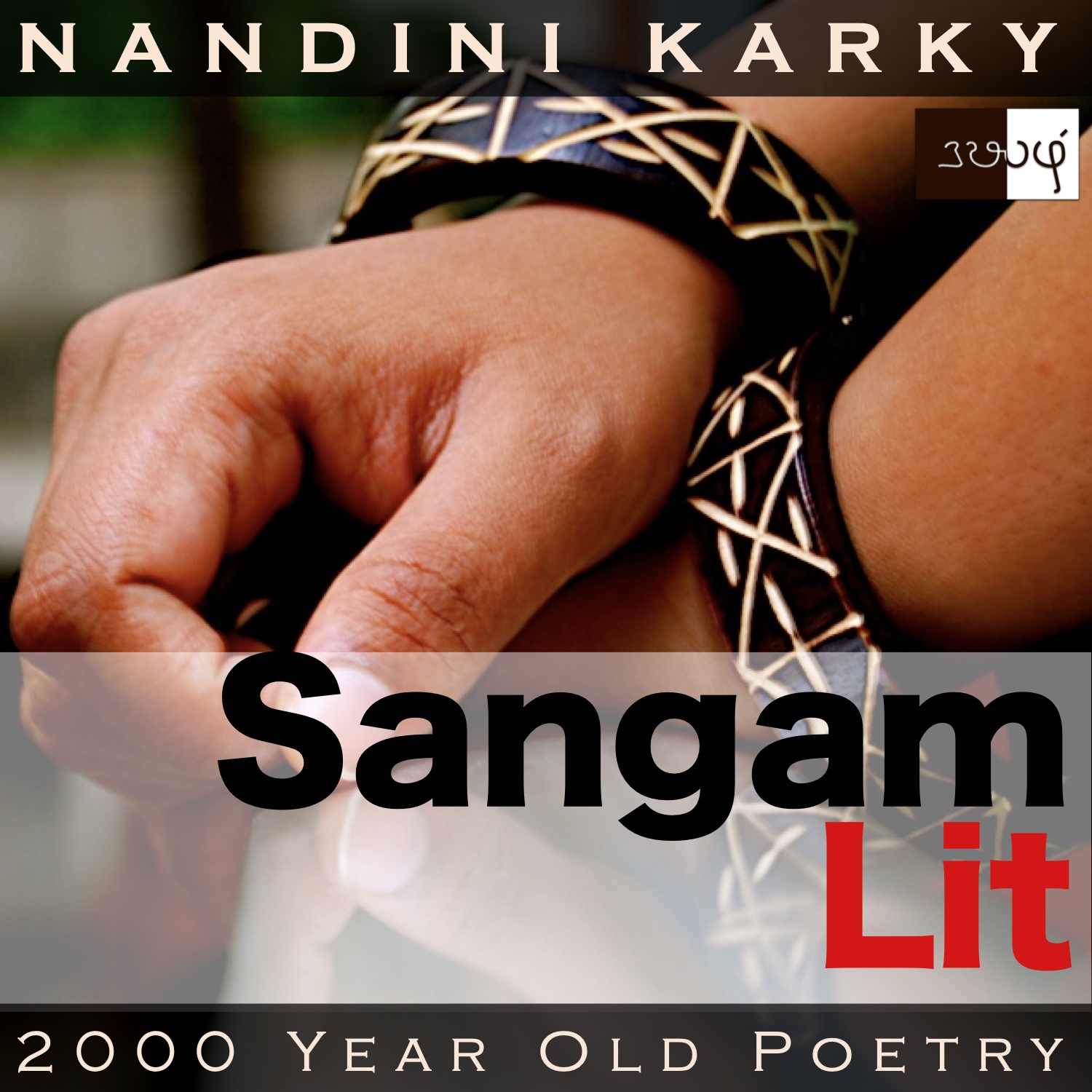Podcast: Play in new window | Download
Subscribe: Apple Podcasts | Spotify | Amazon Music | Android | iHeartRadio | TuneIn | RSS | More

In this episode, we observe the acute effects of pining in a lady, as depicted in Sangam Literary work, Kurunthogai 365, penned by Madurai Nalvelliyaar. Set in the mountains of ‘Kurinji’, the verse speaks in the voice of the confidante to the man, explaining the lady’s inability to bear with his parting.
கோடு ஈர் இலங்கு வளை நெகிழ, நாளும்
பாடு இல கலிழ்ந்து பனி ஆனாவே-
துன் அரு நெடு வரைத் ததும்பி அருவி
தண்ணென் முழவின் இமிழ் இசை காட்டும்
மருங்கில் கொண்ட பலவின்
பெருங் கல் நாட! நீ நயந்தோள் கண்ணே.
‘Sleepless and tearful will be her state’ declares a voice in this verse. In the opening words ‘கோடு ஈர் இலங்கு வளை’ meaning ‘radiant bangles made by carving conch shells’, we see evidence of the usage of shells in making bangles in Sangam times, the significance of which we will explore shortly. The phrase ‘அருவி தண்ணென் முழவின் இமிழ் இசை காட்டும்’ meaning ‘the cool waterfall thunders like drums and creates an uproarious music’ brings alive the sounds of that region with a Dolby Atmos effect. Ending with the words ‘நீ நயந்தோள் கண்ணே’ meaning ‘the eyes of the one you love’, the verse beckons us to listen with empathy.
What do bangles have to tell about the lady’s love life? The context reveals that the man and lady were leading a love relationship when the man decided to part with her to gather wealth for their wedding. At this time, the man approaches the confidante and asks her if the lady can bear with his parting. To the man, the confidante says, “As those shining bangles, made by cutting conch shells, slip away, day after day, they would see no sleep but shed unceasing tears, O lord from the great mountains, with hard-to-reach peaks, overflowing with cascades that roar like drums and create an uproar near the place where jackfruit trees flourish! That would indeed be the state of the eyes of she, whom you love!”. With these words, the confidante tells the man that it would be impossible for the lady to accept the man’s absence with ease.
Time to explore the nuances. The first thing the confidante talks about is the slipping away of shell bangles that the lady wears, and as we have seen in numerous Sangam poems, a classic case of pining. Then, she goes on to relay how tears will be overflowing with no end in sight. From these melancholic descriptions, the confidante moves on to the real beauty of the man’s land and talks about distant peaks, resounding waterfalls, and flourishing jackfruit trees. The confidante concludes by saying that sleepless and tearful state would embody the lady’s eyes.
Let’s shift our focus from the frequent theme of pining onto the shell bangles described here. The first impression I got of Sangam Literature as a school student was of a woman’s bangles slipping away, when separated from her beloved. Later, in the course of these few years of reading Sangam verses, although I have seen and sensed many more facets, that first image of ‘slipping bangles’ has not faded in any way and continues to be etched deeper and deeper. While this is one side, when reading a book called ‘Early Indians’ by Tony Joseph, I came across a striking section on bangles excavated in the ancient sites of the Indus Valley Civilisation. The author declares that in all the other ancient sites in Mesopotamia or Egypt, the number of bangles discovered was only a handful but when it comes to sites in Harappa, it turns out to be hundreds and hundreds of the same. Of the different materials used to make bangles here, conch shells is a prominent one.
No one can fail to see the connection between the importance given to bangles in Sangam Literature and the archaeological finds of actual bangles in Harappan sites. Like the Zebu bull we encountered in a recent Sangam poem, this connection involving bangles also speaks of a continuity and commonality between the Indus Valley Civilisation and the ancient civilisation of the Tamils represented by the living words of Sangam literature. But this instinctive inference is not enough to understand deeper aspects of this relationship between the cultures. Here’s wishing that, someday, in-depth studies in modern scientific fields of enquiry would tangibly carve out the clear truth of our past with the skilled workmanship of these ancient shell bangle makers!




Share your thoughts...